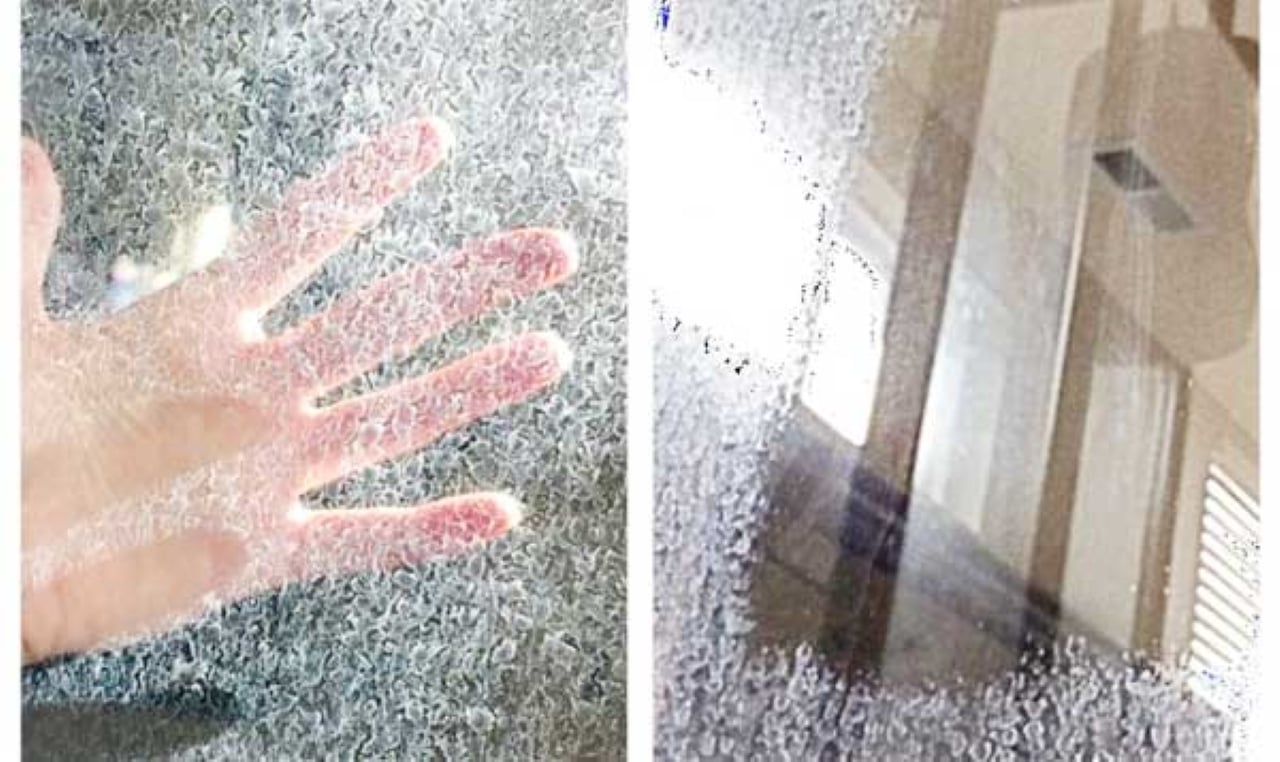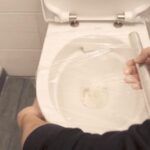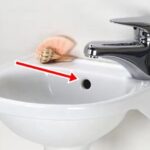Why Do Shower Glass Doors Develop Stains and Calcium Build-Up?
During shower usage, soap and water splatter onto the glass. If not regularly cleaned and maintained, this can lead to oxidation, calcium build-up, and a cloudy appearance.
Using hot water for showers causes the rapid evaporation of steam, which then condenses on the glass and forms deposits due to the precipitation of Mg and Ca.
Low-quality glass is prone to cloudiness and unsightly yellow stains after a short period.
Improper cleaning and maintenance techniques can also contribute to reduced clarity and durability.

Calcium Build-up on Shower Glass
5 Tips to Remove Calcium Build-up from Shower Glass
1. Remove Stains with Vinegar
Vinegar is a solution of acetic acid, effective for removing long-standing grime. It can help tackle some of the cloudiness and stains on the glass.
To use, spray diluted vinegar onto the affected areas, wipe it down, and then rinse with clean water.
2. Baking Soda for Oxidation and Calcium Build-up
Baking soda is great for removing oxidation, new calcium deposits, and stains. However, it may not be as effective for long-standing, thick grime.
Mix baking soda with vinegar or lemon juice, apply it to the dirty glass, scrub with a brush, and then rinse thoroughly.
3. Toothpaste for Fresh Stains
Toothpaste can be used to remove fresh calcium deposits and stains. Apply it directly to the affected areas and let it sit for 5-10 minutes. Then, scrub with a soft brush and rinse with water for a sparkling finish.
4. Lemon and Salt for Tough Stains
A mixture of lemon juice and salt in a 2:1 ratio can effectively remove calcium build-up. Use a brush or cloth to apply the mixture to the glass, and then rinse with clean water.
5. Specialized Cleaning Solutions for Shower Glass
If the above methods don’t work on stubborn stains, opt for specialized cleaning products. Choose natural, non-toxic options to ensure the safety of your family.
Tips for Maintaining Your Shower Glass Doors
Proper maintenance will extend the lifespan and cleanliness of your shower glass, reducing the likelihood of stains.
Invest in high-quality, reputable glass with a warranty and after-sales service.
Consider applying a decal or protective coating to the glass, or using a water-repellent spray before use to prevent water spots.
If shampoo or shower gel accidentally sticks to the glass during your shower, use a spray nozzle to rinse it off afterward. Then, use a squeegee or a dry cloth to remove the water.
“Yellowed Shoes: Back to White with These Easy Home Hacks”
“Yellowing shoes are an eyesore and a common problem for many. Over time, your favorite pair can turn from a dazzling white to a dull, discolored mess, leaving you frustrated and disappointed. But fear not! With our expert tips and tricks, you can easily tackle this issue and bring your shoes back to their former glory. Say goodbye to yellowing and hello to sparkling fresh kicks!”





































